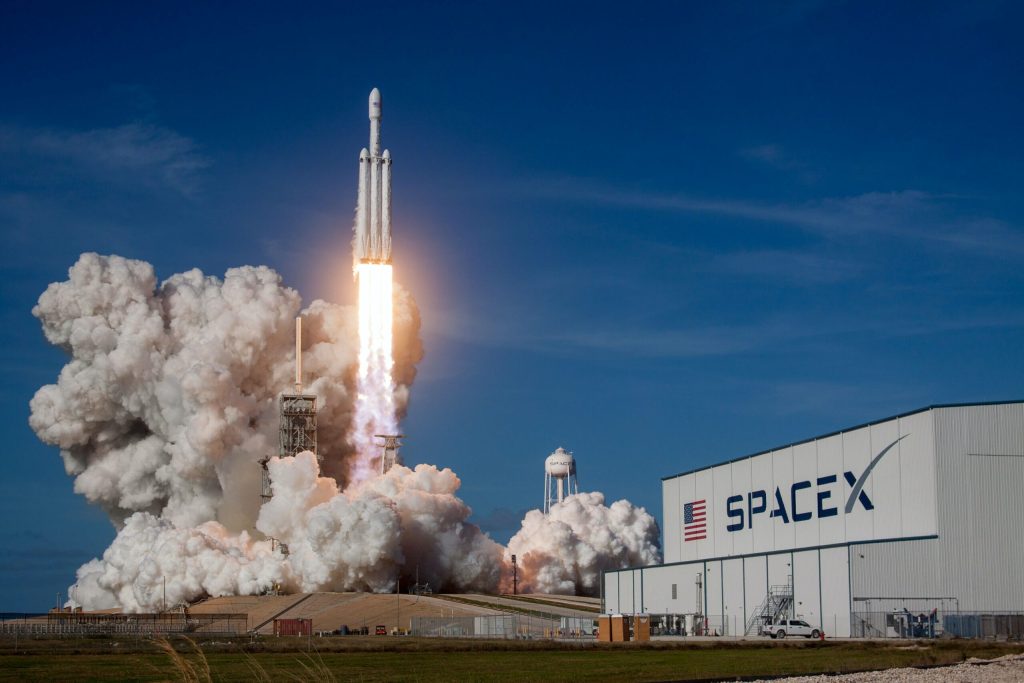Investing in the Future: Why SpaceX Stock is the Next Big Opportunity for Investors

In a world where innovation drives investment, SpaceX stock stands out as the next big opportunity for savvy investors. With its bold vision for interplanetary travel and ground-breaking advancements in rocketry, SpaceX is not just reshaping space exploration; it’s redefining the landscape of investment potential.
As the company continues to secure lucrative contracts with NASA and the burgeoning satellite internet market through Starlink, its stock becomes increasingly attractive. Investors who recognize the value of pioneering technology and bold ambition will find that SpaceX embodies both. As we delve deeper into the opportunities that lie ahead, it’s clear that now is the time to consider taking your portfolio to the stars. Join us as we explore why investing in SpaceX today could yield monumental returns tomorrow.
Overview of SpaceX’s Business Model
SpaceX’s business model combines vertical integration, cost efficiency, and diversified revenue streams to disrupt the aerospace industry. The company designs, manufactures, and launches rockets and spacecraft in-house, minimizing reliance on external suppliers. Its flagship innovation—reusable rocket technology—has slashed launch costs by 30%, enabling SpaceX to dominate the commercial satellite and government contract markets.
Additionally, SpaceX’s Starlink satellite constellation generates recurring revenue through global broadband subscriptions, while Starship—its next-gen spacecraft—aims to monetize lunar missions, Mars colonization, and point-to-point Earth travel. By blending government contracts (e.g., NASA’s $2.9 billion lunar lander deal) with commercial ventures, SpaceX balances risk and scalability.
The Growth of the Space Industry
The global space economy, valued at $630 billion in 2023, is projected to reach $1.8 trillion by 2035, driven by satellite internet, space tourism, and deep-space exploration. Low-cost launches (down 90% since 2000) and AI-driven data applications are accelerating accessibility, with SpaceX capturing 53% of the global launch market.
Key growth areas include:
Satellite internet: Starlink’s 6,459 satellites (as of 2025) serve 270+ million users, targeting underserved regions.
Space tourism: Companies like SpaceX and Blue Origin aim to make suborbital flights mainstream, with a projected $10 billion market by 2030.
Lunar and Mars missions: NASA’s Artemis program and SpaceX’s Starship are paving the way for sustainable off-world infrastructure.
SpaceX’s Recent Achievements and Milestones
2024–2025 marked pivotal moments for SpaceX:
1. Starship progress: Successful Super Heavy booster landings and in-orbit fuel transfer tests for lunar missions.
2. Historic missions: The *Fram2* crewed polar orbit flight (March 2025) and first commercial spacewalk (September 2024)。
3. Starlink expansion: Deployment of direct-to-cell satellites, enabling unmodified smartphones to connect globally.
4. Reusability records: Falcon 9 boosters reused 21 times, cutting launch costs to $600 million per 20-ton payload.
These milestones solidify SpaceX’s technical leadership and align with Elon Musk’s vision of making humanity “multiplanetary”。
Financial Performance and Projections for SpaceX
SpaceX’s valuation soared from $74 billion in 2021 to $350 billion in 2024, fueled by Starlink’s profitability and launch dominance. Key financial highlights:
Revenue: $13 billion in 2024, driven by 180 Falcon 9 and 25 Starship launches.
Profitability: Starlink achieved positive cash flow in 2023, with projected annual revenue of $30 billion by 2030.
Cost control: Reusability reduces Falcon 9 refurbishment costs to under $1 million per launch.
Analysts predict SpaceX’s IPO could value the company at $1 trillion by 2030, contingent on Starship’s success and Mars mission viability.
Competitive Landscape: How SpaceX Stands Out
SpaceX outpaces rivals through:
1. Cost leadership: Falcon 9 launches cost $67 million—half the price of competitors like ULA.
2. Vertical integration: In-house production of engines, avionics, and satellites ensures quality and speed.
3. Innovation velocity: Rapid iteration (e.g., 8 Starship prototypes tested in 2024) contrasts with Boeing’s delayed Starliner.
4. Diversification: Unlike Blue Origin’s focus on tourism, SpaceX serves defense, telecom, and exploration markets.
However, rising competition from China’s *Hongyan星座* and Europe’s Ariane 6 poses future challenges.
Risks and Challenges of Investing in SpaceX stock
Key risks include:
Technical failures: Starship’s 2024 test explosions highlight the complexity of Mars-ready systems.
Regulatory hurdles: FAA launch approvals and spectrum allocation disputes could delay Starlink’s growth.
Funding gaps: Mars colonization requires ~$10 trillion, necessitating unprecedented public-private partnerships.
Market saturation: Rival satellite networks like Amazon’s Kuiper may erode Starlink’s margins.
Expert Opinions and Analyst Insights
ARK Invest projects SpaceX’s space internet revenue alone could hit $130 billion annually by 2030. Morgan Stanley estimates Starlink’s IPO valuation at $810 billion, driven by its first-mover advantage. However, critics warn that SpaceX’s “launch-first” strategy risks orbital congestion and regulatory backlash.
How to Invest in SpaceX Stock
While SpaceX remains private, investors can gain exposure through:
1. ETFs: ARKX (space exploration) and UFO (satellite operators) include SpaceX suppliers.
2. Public partners: Alphabet (Google) and NVIDIA collaborate on AI-driven satellite data projects.
3. Pre-IPO platforms: EquityZen and Forge Global offer accredited investors shares at $10M+ minimums.
4. SPVs: Special-purpose vehicles pool funds for SpaceX equity, though fees and risks are high.
Conclusion: The Future of SpaceX stock and Investment Potential
SpaceX is redefining aerospace with reusable rockets, global internet, and interplanetary ambitions. While risks like technical setbacks and funding gaps persist, its $350 billion valuation reflects transformative potential. For investors, indirect exposure via ETFs or suppliers offers a balanced approach to capitalizing on the $1.8 trillion space economy. As Elon Musk aptly stated, “The future of humanity is fundamentally going to bifurcate: either become a multiplanet species or stay on Earth until an extinction event”。 SpaceX aims to ensure the former—and in doing so, could deliver astronomical returns.